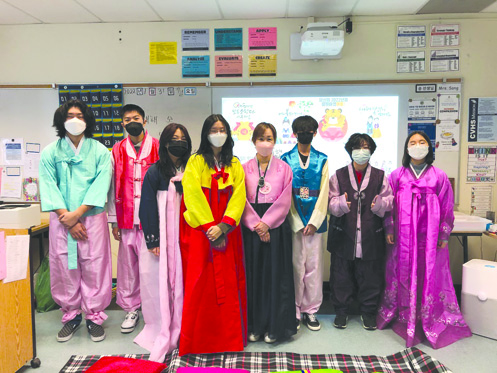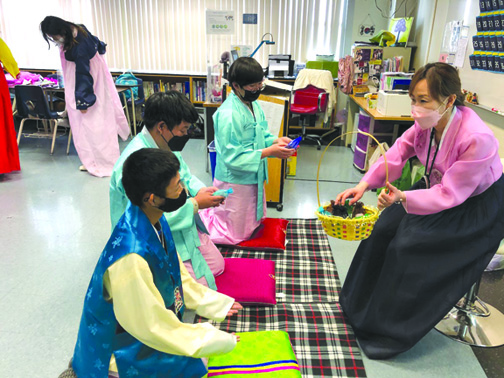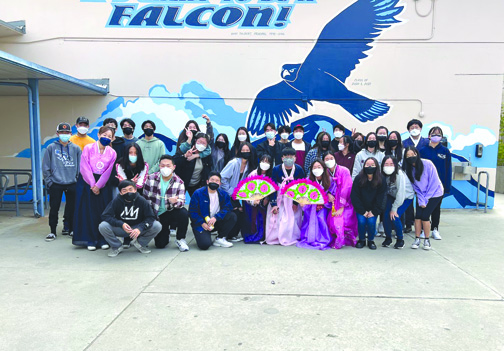
Photos provided by Bethany BROWN
By Bethany BROWN
Korean-language classes at Crescenta Valley High School celebrated the Lunar New Year on Jan. 31 and Feb. 1. The holiday was celebrated on both days to accommodate the newly implemented block scheduling and ensure each student had the opportunity to experience the festivities arranged by Korean-language teachers Tina Song and Young-iL Kim.
The block schedule came as students returned to on-campus learning after being remote due to the COVID-19 pandemic. With a block schedule, students attend three of their six periods one day and the remaining three the next, alternating every other day.
Song said she felt “overjoyed” to celebrate with her students again this year after not being able to last year. She set up four different cultural “centers” across campus and students in each block period were separated into smaller groups. Each group rotated between the centers and began in the classroom where they got to put on traditional Korean dress, or hanbok. Students would then offer a traditional bow to their teacher and in return receive a goodie bag containing traditional Korean games and candy.

During Lunar New Year, it is tradition to give the gift of a bright red envelope to friends and family. The red color symbolizes good luck and prosperity in Chinese and other East Asian cultures. These are often filled with “lucky money” meant to represent good wishes for the year ahead. Song included her own “lucky money” for students – fake dollar bills that served as extra credit points.
The next two centers invited students to play Korean games like Jegi Chagi – a game similar to the Western game of hacky sack – and Yut Nori, a board game involving yut sticks instead of dice. The sticks are thrown into the air and how they land determines how far the player advances on the board. Students ended their rotation at the last center where they found an assortment of Korean foods from which to choose as they made their own bowls and sikhye – a traditional sweet rice beverage – for dessert. They were encouraged to connect with their peers through conversation and celebration.
“It was a great two days; the students were really happy and super excited,” Song said. “It may have been a bit of extra labor for me [to set everything up] rather than just in-the-classroom teaching, but it’s always worth it at the end because the students really get to experience their culture and learn about our traditional customs in a hands-on and fun way.”

